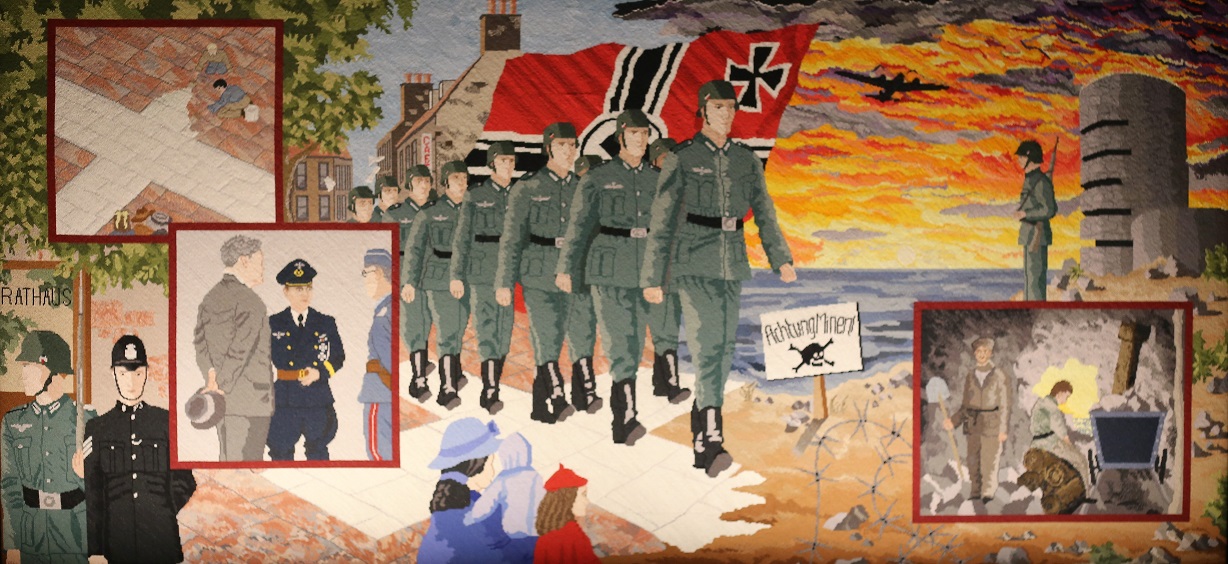The Bayeux Tapestry
The Bayeux Tapestry is an embroidered cloth nearly 70 metres long and 50 centimetres tall that expresses the events leading up to the Norman conquest of England concerning William, Duke of Normandy, and Harold, Earl of Wessex, later King of England, and culminating in the Battle of Hastings.
The Bayeux Tapestry was commissioned by Bishop Odo to embellish his newly-built cathedral in Bayeux in 1077. Although the end of the embroidery is missing, the story ends with the Anglo-Saxons fleeing at the end of the Battle of Hastings in October 1066

Creating these Tapestries around this era is a start, a new begining so called photography as it captures and expresses the storys and events that took place.
The Occupation Tapestry
The Occupation Tapestry was the biggest community art project ever in Jersey, and made by Islanders for Islanders. There were more than one tapestry created. Almost every parish was in on the idea of these tapestries to become famous in order to tell the story of what life was like during the five years of German occupation.
9th May 1995, the 50th anniversary of the Liberation of the Island from 5 years of occupation. The tapestry was made from a single panel to the twelve panels, each of which depicted a scene of local life during the German Occupation. Each of these panels was designed by Wayne who gave guidelines on colours to be used on the key elements of the panels to make the tapestry enlightening.



